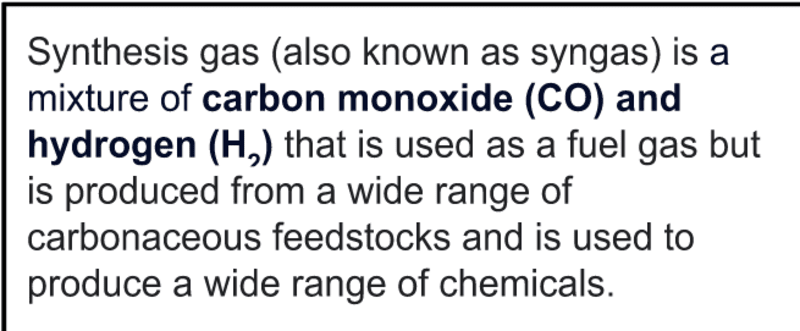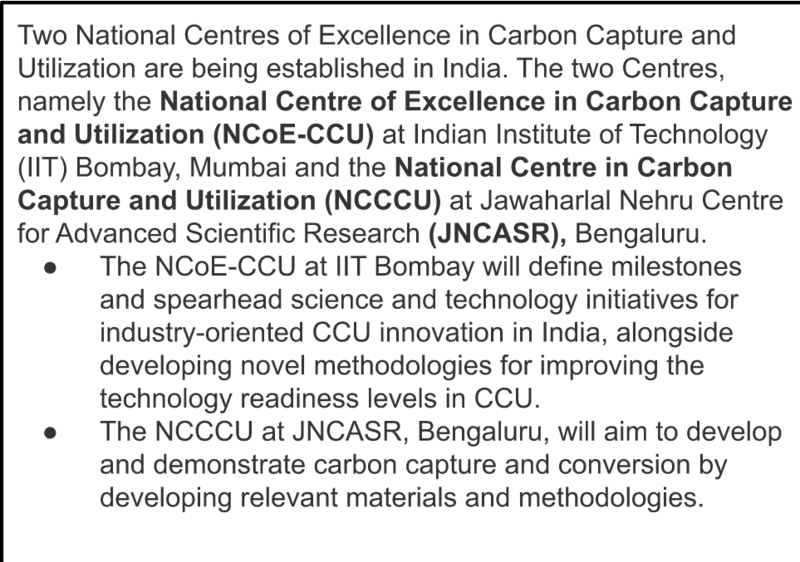GS Paper III
News Excerpt:
A new technology for converting carbon dioxide (CO2) to carbon monoxide (CO) holds the potential for carbon capture and energy savings in the steel sector.
Importance of Carbon Monoxide in Industries
- Carbon monoxide (CO) is a widely used chemical in the industry, especially in the form of syngas.
- CO is a critical component in the steel industry for converting iron ores to metallic iron in blast furnaces.

Current Technology:
- Currently, CO is produced by the partial oxidation of coke/coal, which results in extensive CO2 production as an end product. If this produced CO2 can be captured and transformed into carbon monoxide, it could create a circular economy while decreasing the carbon footprint and associated costs.
- The frequently used technique for CO2 to CO conversion happens at elevated temperatures (400–750 °C), and an equivalent amount of H2 is required.

Proposed IIT-Bombay Technology:
- The technology developed by IIT Bombay converts carbon dioxide to carbon monoxide under electro-catalytic conditions at ambient temperatures in the presence of water.
- It requires only minimal energy as it can proceed at ambient temperatures (25–40 °C) in the presence of water.
- The energy required for this electro-catalysis reaction can be harnessed directly from a renewable energy source (a solar panel or windmill). This ensures a carbon-neutral operating scenario for a CO2 to CO conversion.
Need for this technology:
- India is the second-largest manufacturer of cement and steel, the third-largest consumer of energy, and the fourth-largest petroleum refiner. These are ‘hard to decarbonise’ sectors.
- At the 26th Conference of Parties (COP) to the United Nations Framework Convention for Climate Change (UNFCCC) in November 2021, India Pledged to achieve Net Zero Emissions by 2070.
- India decided to achieve its short-term and long-term targets under the Panchamrit action plan, like- reaching a non-fossil fuel energy capacity of 500 GW by 2030, fulfilling at least half of its energy requirements via renewable energy by 2030, reducing CO2 emissions by 1 billion tons by 2030; reducing carbon intensity below 45 per cent by 2030; and finally pave the way for achieving a Net-Zero emission target by 2070.
- Thus, India has also launched the Mission Innovation Challenge on Carbon capture, utilisation, and storage (CCUS) to enable near-zero CO2 emissions from power plants and carbon-intensive industries.
Carbon capture, utilisation, and storage (CCUS):
- It is a method of lowering carbon emissions that could be critical in combating global warming. It is a three-step process that involves absorbing carbon dioxide produced by power generation or industrial activity such as steel or cement production, transporting it, and storing it.
Three-step Process:
- CO2 is separated from other gases produced in industrial set-ups, such as coal power plants, steel mills, cement plants, etc.
- The CO2 is subsequently compressed and transferred to a storage location via pipelines, road conveyance, or ships.
- Finally, the CO2 is pumped far below into rock formations for long-term storage.
Way Forward:
- This initiative will help facilitate research and innovation that can lead to the development of safe and cost-effective CO2 capture, utilisation, and storage (CCUS) technologies.
- India has been continuously transitioning to clean energy, attaining the highest rate of renewable capacity addition among all major economies and setting aggressive transition targets.
- India's energy-mix strategies include a more significant shift towards clean energy alternatives, increased manufacturing capacity, energy use efficiency, and a policy push for hydrogen, providing production-linked incentives. Furthermore, developing technologies such as the 2G Ethanol Pilot, Comfort climate box for tropical regions, Hydrogen Valleys, and Heating and Cooling virtual repository will help achieve India’s targets.
Prelims PYQ
Q. With reference to the Agreement at the UNFCCC Meeting in Paris in 2015, which of the following statements is/are correct? (UPSC 2016)
- The Agreement was signed by all the member countries of the UN and it will go into effect in 2017.
- The Agreement aims to limit the greenhouse gas emissions so that the rise in average global temperature by the end of this century does not exceed 2 °C or even 1.5 °C above the pre-industrial levels.
- Development countries acknowledged their historical responsibility in global warming and committed to donate $ 1000 billion a year from 2020 to help developing countries to cope with climate change.
Select the correct answer using the codes given below:
(a) 1 and 3 only
(b) 2 only
(c) 2 and 3 only
(d) 1, 2 and 3
